Categories: Featured Articles » Interesting Facts
Number of views: 12139
Comments on the article: 0
Fluorescent lamps - from heyday to sunset
Luminescent lighting in the form in which we have it today is about 80 years old, although the history of the formation of technology lasted about the same, that is, in general, about 160 years have taken the path of technology of luminescent lamps.
Before a fluorescent lamp appeared in every house, before fluorescent lamps appeared in street lighting, before fluorescent lamps appeared in offices, engineers and scientists went a long way from inventing a vacuum tube, through experiments with glowing inert gases under high voltage, to developing integral technology with reliable and high-quality fluorescent coating of luminous tubes and a suitable power supply circuit for fluorescent lamps.

In fairness, it’s worth starting with Mikhail Vasilievich Lomonosov, who in the 18th century observed the glow of a glass ball filled with hydrogen under the influence of an electric current. Lomonosov did not set himself the task of creating a source of electric light, so the invention of a fluorescent lamp as such was still a long way off.
The first gas-discharge lamp (in the form of an experimental setup) will be released in 1856, and it will be a Geisler tube. The German glassblower Heinrich Geisler was distinguished by his inventive talent, and thanks to a vacuum pump of his own design, Geisler pumped air out of a glass flask.
Using a high-voltage coil, Geisler managed to excite a greenish glow in an evacuated flask. Filled with gas, the bulb changed the hue of the glow under the action of high-voltage currents. This invention was named after the scientist - the Geisler tube.
The phenomenon of electroluminescence of various substances will be noted later by Alexander Edmon Becquerel. Experimenting in 1859 with Geisler tubes, he was the first to propose to cover the inner surface of the tubes with luminescent substances.
Thanks to the extensive preliminary experience of research in the field of sunlight and artificial light, it is Becquerel who will set the direction in which the technology of luminescent lighting will go further.
Becquerel’s interest was purely scientific, and he was not going to create light sources, therefore, at the stage of the experiments, a not very bright glow was obtained, and the experiments were not continued by the scientist. Although the idea of using a phosphor has become an important technological step.
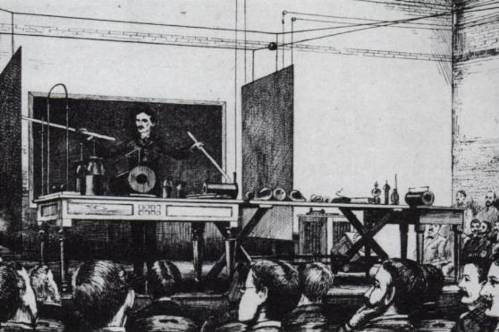
In May 1891, an American scientist, a Serb by descent, Nikola Tesla, will hold a vivid demonstration at Columbia University with Geisler tubes, where he will show the glow of vacuum tubes in the electric field of a high-frequency coil.
Tesla will note the dependence of the character of the glow on the inner coating of the tubes, for example, yttrium gave a bright white light, the intensity of which was sufficient for reading, as the inner phosphorescent coating of the tubes. Tesla used a high-voltage electrostatic field, and could place the tube without electrodes anywhere in the room, and it glowed only thanks to induction.
Later, namely on June 23, 1891, Tesla will receive a patent for an artificial lighting system with argon gas discharge lamps powered by high voltage and high frequency currents (patent No. 454622). Argon, by the way, is still used in fluorescent lamps to this day.
In 1894, American electrical engineer and inventor Daniel MacFarlan Moore invented a fluorescent lamp that used inert gases, carbon dioxide - for white light, and nitrogen for light pink light.The lamp was notable for its complex design, and it was not until 1904, after improvements, that the Moore lamp began to be used in office rooms and shops for artificial lighting.
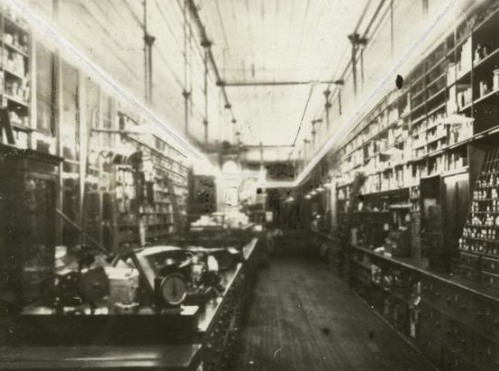
Thomas Edison also made an attempt to practically develop the applicability of the Geisler tube, and in 1896 he developed a coating of calcium tungstate for x-ray tubes, later, in 1907, the invention will be patented as a fluorescent lamp.
However, such a lamp was not suitable for lighting, as a result, Edison stopped on promoting his incandescent lamps, with which he already achieved some commercial success. Although, back in 1893, Edison himself performed at an exhibition in Chicago, where he showed a luminescent glow (probably wanting to keep up with Tesla and Moore).
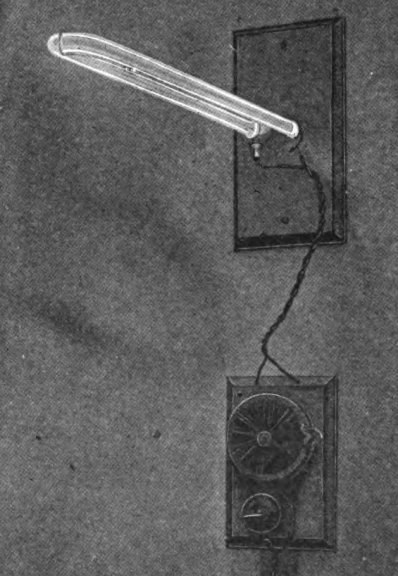
Already in 1901, American electrical engineer and inventor Peter Cooper Hewitt demonstrated the first mercury lamp. Mercury vapors gave a soft blue-green light, and efficiency exceeded Edison's bulb. However, the blue-green light was not suitable for the widespread introduction of Hewitt lamps for artificial lighting. Although, later it was the Hewitt system lamps that will be everywhere on lampposts (since 1930).
In 1926, the German inventor Edmund Germer, together with his colleagues, searching for an effective artificial source of ultraviolet radiation, found that by increasing the pressure inside the flask covered with fluorescent powder, you can get even white light, much brighter, and therefore more suitable for artificial lighting than it was given incandescent lamps.
Edmund Germer will later be rightly called the father of modern fluorescent lamps, because it is Hermer's lamps that are closer to today's fluorescent lamps in their arrangement.
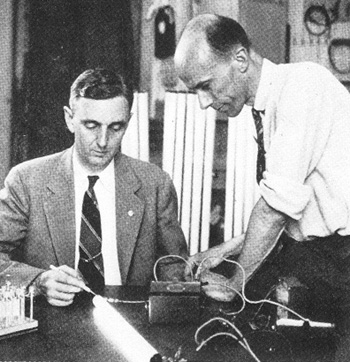
In 1934, General Electric will buy back Hermer’s patent, and a research team led by George Inman and Richard Thayer will begin to work hard to perfect Germer’s invention. The effectiveness of fluorescent lamps compared to incandescent lamps will amaze everyone.
The reports of 35 lumens per watt achieved by the General Electric laboratory by August 1934 will turn the world of artificial lighting upside down, and lamp production will begin in the United States in December 1934. By 1938, 48-inch 40-watt tube lamps could be seen in every office.
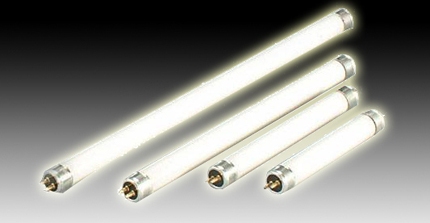
Today, fluorescent lighting is in no hurry to give up their positions, although the presence of mercury in the flasks does not play in favor of fluorescent lamps.
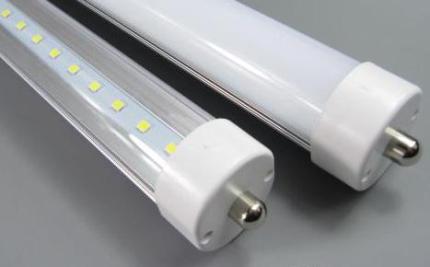
Heels are already stepping on super efficient LEDswhich do not contain mercury, while the light output reaches 150 lumens per watt, which is 1.5 times higher than the average for fluorescent lamps, so the sunset of fluorescent lighting is perhaps close.
See also at bgv.electricianexp.com
:
